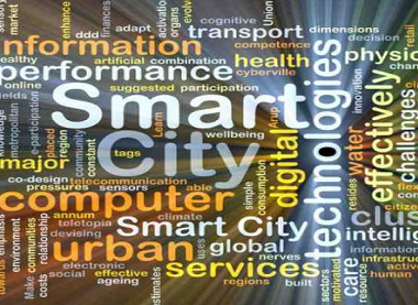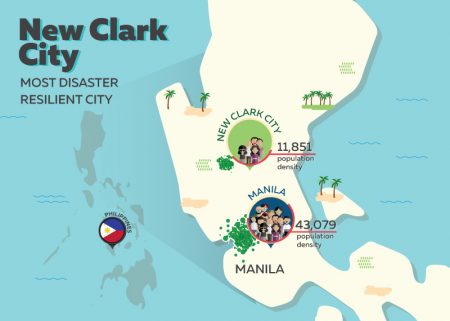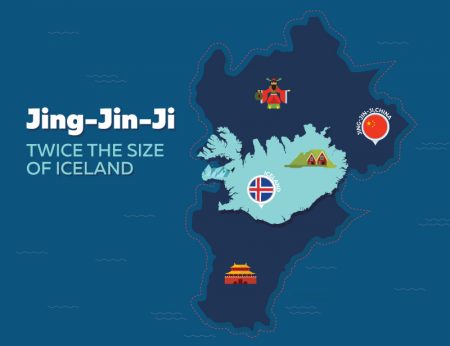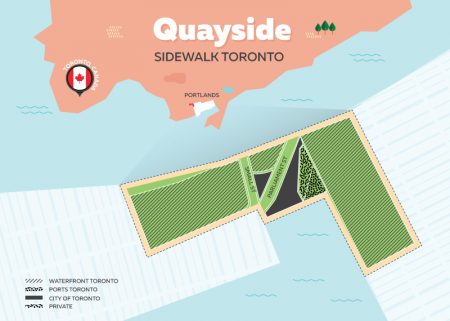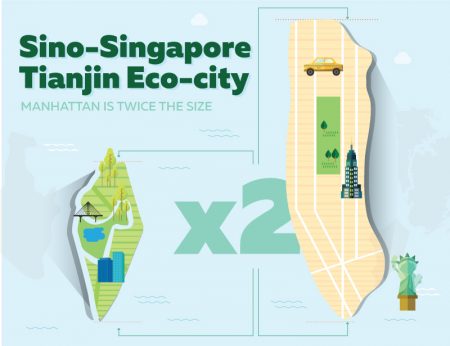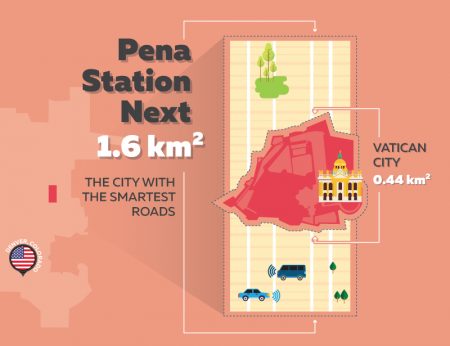November 13, 2018 – Powertools2U have learned about construction plans for four eco-cities of the future and asked me to share what they have uncovered with my readers. With world population expected to grow to nearly 10 billion by mid-century, (currently there are more than 7.5 billion of us) and with the majority of us living in cities, humanity faces enormous challenges in ensuring that our presence on this planet remains sustainable. Today cities occupy a mere 2% of the world’s land masses but they use 75% of the planet’s resources. Finding a sustainable path forward requires governments, academics, scientists, engineers, and planners with a significant challenge. What follows represents how some are addressing the challenges in designing cities of the near future. I thank Bekki Ramsay of Evolved Search for sharing this information with my readers.
Pneumatic waste systems, pollution sensors, robots, drones, and self-driving cars are among the technologies we expect to be in our future. These features may be coming to a city near you. Why? Because they represent the tools and technologies that could make our cities more sustainable and eco-friendly as our world population continues to grow. Expect new cities to emerge that may help us achieve balance within our planet. Here are five that may become part of the urban landscape by mid-century.
New Clark City – The Most Disaster Resilient Urban Centre on the Planet
Location: Capas, Tarlac, Philippines
Start Date: December 2016
Completion Date: December 2050
Developer: BCDA Group
Key Features: Disaster-Proof, Green-Friendly
Population: 1.12 Million Residents and 800 thousand workers
Area Total: 94.50 square kilometers (36.5 square miles)
Cost: $14 Billion
Minimum Elevation: 184 meters (604 feet) above sea level
Green Spaces: Two-Thirds of the City will be Green Areas, Farmlands and Parks
Green Tech: Buildings will be equipped with technology that will reduce energy and water consumption
New Philippines City Located to Minimize Natural Disaster Threats
One of the coolest parts of New Clark City is its ability to overcome the worst Mother Nature can throw at it. The Philippines gets earthquakes. In this past year the country had experienced 157 of them as of August 14, 2018. What doesn’t help is that the capital lies on a major fault line making Manila the 4th most city on the planet at risk for such a disaster. The location of New Clark City, therefore, is not near any fault lines. Its location surrounded by mountains also will protect it from Pacific typhoons and floods. Developers believe the combination will save the country more than $101 billion USD in damages.
The city plans to use a building material called Lahar. Uniquely sourced locally, Lahar, is a type of mudstone formed by volcanoes. Using it as a substitute for concrete will eliminate a considerable amount of carbon pollution.
New Clark City will largely be pedestrian friendly with mass transit to minimize use of cars. Compared to Manila, which is known for its traffic jams and smog that affects 98% of its residents, New Clark City’s air will be near pollution free.
Jing-Jin-Ji – The Largest City of the Near Future
Location: China
Area Size: 200,000 square kilometers (over 77,200 square miles)
Population: Around 100 Million – larger than a third of the United States
Start Date: 2013
Completion Date: 2050
Key Features: Economic Powerhouse, Megacity
Cost: $36 Billion
New Transport Routes: By 2050, 24 intercity railways are planned for completion.
Who would have thought that a city could be the same size as England and Scotland put together. Well that’s the plan for Jing-Jin-Ji. Beijing’s hinterland today includes Tianjin and Hebei provinces. The centre of Tianjin includes Tianjin city. Today these three localities are separate and distinct. But this is about to change as the two neighbouring provinces share the capital’s future. A mega project started in 2013 aims to create a single megalopolis tied together by a road and high-speed rail system with no more than a one-hour commute to anywhere within the area’s boundaries.
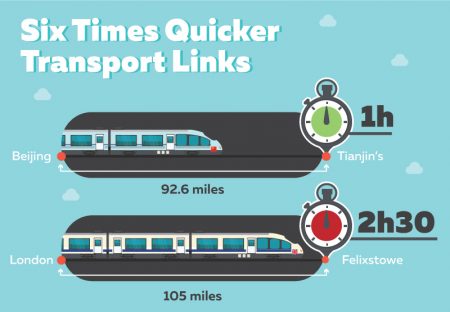 For current Beijing, it will mean a short commute to Tianjin City covering 150 kilometers (92.6 miles) in an hour. For comparison to travel from London to Felixstowe in the U.K., approximately 170 kilometers or 105 miles it takes 2.5 hours by train.
For current Beijing, it will mean a short commute to Tianjin City covering 150 kilometers (92.6 miles) in an hour. For comparison to travel from London to Felixstowe in the U.K., approximately 170 kilometers or 105 miles it takes 2.5 hours by train.
Creating this new megalopolis will also allow China to redistribute the population of the region and limit Beijing proper to no more than a target 23 million by 2020.
Quayside, Toronto – The Most Techy City on the Planet
Location: Portlands of Toronto
Start Date: Still in the planning stage
Cost: $1.02 Billion
Area: 4.85 hectares (12 acres)
Key Features: Weather Tech, Robots
Green Qualities: Half of the area’s roofs will be Solar Panels with 10% of power requirements generated within the community itself
A Google company, Sidewalk Labs, plans to transform Toronto’s Quayside into a futuristic mini city. Toronto’s lack of affordable housing, an ongoing problem, may find a solution in the new construction methods developed for this city within a city. Construction methods will lead to flexible buildings that can serve multiple purposes. Even the roadways will be transformable from pedestrian rights of way to become vehicle friendly depending on time of day. Within Quayside the residents will have access to autonomous electric-powered transit.
The city will employ weather tech to heat pathways to remove snow and ice. Retractable canopies will turn internal structures into outdoor spaces in good weather. Underground robots will provide service delivery dealing with waste management and maintenance functions.
Quayside is to be an Internet of Things (IoT) hotbed collecting data continuously on every aspect of the living conditions of its residents. Who will own the data collected is currently what’s holding back shovels in the ground. With all these intelligent sensors and algorithms planned to operate the city, Quayside critics fear how the mountains of data collected get used. Sidewalk Labs and the city have held numerous workshops and town halls to iron out privacy policies and intellectual property concerns.
Sino-Singapore Tianjin – The Greenest City
Start Date: 28 September 2008
Completion Date: 2020
Area: 30 square kilometers (11.6 square miles)
Population: 350,000
Cost: $6.5 Billion
Jobs: At least 50% of the residents will have jobs within the city
Key Features: Green-Friendly, Green-Spaces, Pneumatic Waste Tunnels
What was once a dumping ground for toxic waste, is soon to become the world’s largest eco-city. Sino-Singapore Tianjin Eco-city, China, is purposely being built on former wasteland according to Ho Tong Yen who states “In the past, so-called ecocities have been built in ecologically important areas or on useful arable land. We wanted to show that it’s possible to clean up a polluted area and make it useful and liveable.”
Renewable energy will account for at least 20% of the energy used with solar, wind and geothermal sources. Another focus is to eliminate cars with nearly all traffic in the area public transit. Pathways for cycling and walking will be extensively used. Pneumatic waste collection tunnels will remove the trash. The city will feature a significant amount of green space including reed beds in lakes. The emphasis is on creating a place where humans and animals can co-exist.
Pena Station Next – The City with The Smartest Roads
Location: Denver, Colorado
Area Size: 1.6 square kilometers (0.62 square miles)
Start Date: 2016
Completion Date: 2026
Cost: $500 million
Key Features: Health Tech, Smart Roads
After Panasonic’s success with a smart city project in Fujisawa, Japan, the company is now taking its ideas to Denver, Colorado. According to Panasonic Enterprise Solutions President, Jim Doyle, they are not building a copycat of the Fujisawa project but rather creating a town unique to Denver. The developers are aware there are massive cultural differences, and what works in Japan may not work in the U.S. One thing they will take from Fujisawa though is a wellness centre, facilities to encourage inhabitants to live a healthier life. Panasonic wants to use smart scales and smart blood pressure monitors, so if you can’t make it to the doctor’s office they can remotely check on you.
The project includes smart roads it calls Road X. The technology lets vehicles and roads communicate. The goal to have fewer accidents and better traffic management. Road X suggests to drivers best routes to take based on real-time traffic.
Taking advantage of Colorado’s sun the plan is to build rooftop solar capacity. A microgrid will both deliver and store excess solar energy. Panasonic plans to move its North American headquarters into the smart city, a 10,400 square meter (112,000 square foot) facility complete with a solar roof. The site is four minutes from the train station for an easy pedestrian commute. States Doyle “We really want this to be a true transit-oriented development. And if everyone is getting in a car and driving, that’s a huge failure.”
If you know of a new city being developed that fits within the criteria of eco-friendly, sustainable, and taking full advantage of IoT and smart systems, write to us here and we will share the information with our readers.

